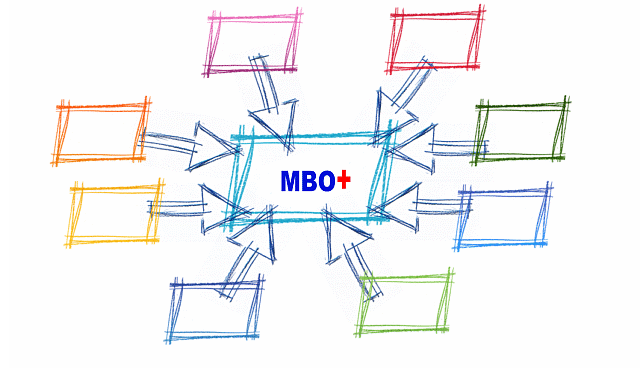
The Coronavirus pandemic is changing the workplace, temporarily or possibly even permanently. Many of us work remotely — some of us are used to it; others are undergoing more-or-less training on the job as to how to be effective in our new home-office environment. It sounds like old “management by objectives” may become the state-of-the-art way to run distributed teams.
In the pre-corona world, management would keep an eye on their employees to ensure no time is wasted on water cooler discussions or playing computer games. Actual eye-to-eye contact on various levels of the organizational hierarchy used to be essential. However, when teams work from home and have no direct visual contact, traditional oversight is no longer possible. Nor is it possible to chat casually with colleagues when a team member is having a problem but feels embarrassed to ask for help. Sometimes, having a quick informal talk in the break room energizes resolving issues. An elevator can be surprisingly beneficial.
A somewhat totalitarian resolution would be to establish a “big brother” approach, such as a permanent web camera, key loggers, AI tracking tools, and high-frequency “feedback” meetings. There would be no privacy anymore – a “naked employee.” In some countries, such an approach would seem acceptable, while it others it would be out of the question. I believe that such an invasive procedure would inflict short- and long-term harm to an organization. There must be a better way.
Dozens of management fads (see LINK) bear a promise of “silver bullet – quick solution to such (and similar) organizational problems. One of these ideas, “management by objectives” (MBO), seems to be applicable to distributed teams. After all, everyone in an organization is (or, at least, should be) pursuing a consistent set of project goals. Instead of mere oversight, an “inner leadership” for each person looks like a good plan. Unfortunately, similarly to other initially well-intended management past approaches, MBO has suffered from abuse, misuse, and “hype-ization.”
Thus, the new “MBO” must not be the traditional, inefficient management-by-objectives approach that has received much criticism over the past decades. In modern organizations, the objectives keep changing rapidly. Having a meaningful MBO strategy using yearly feedback management reviews is practically impossible. Therefore, The old MBO is too static and way too slow.
It is essential to manage goals swiftly and agile on all levels is required in a world of working-from-home environment. Let us call it an “MBO+.” I am fully aware that it could turn out to be yet another management fad. To me, however, it feels such an MBO+ could, for once, turn out to be working.
Let’s start a conversation on LinkedIn or X.com (formerly Twitter).
I am a project manager (Project Manager Professional, PMP), a Project Coach, a management consultant, and a book author. I have worked in the software industry since 1992 and as a manager consultant since 1998. Please visit my United Mentors home page for more details. Contact me on LinkedIn for direct feedback on my articles.






Be the first to comment